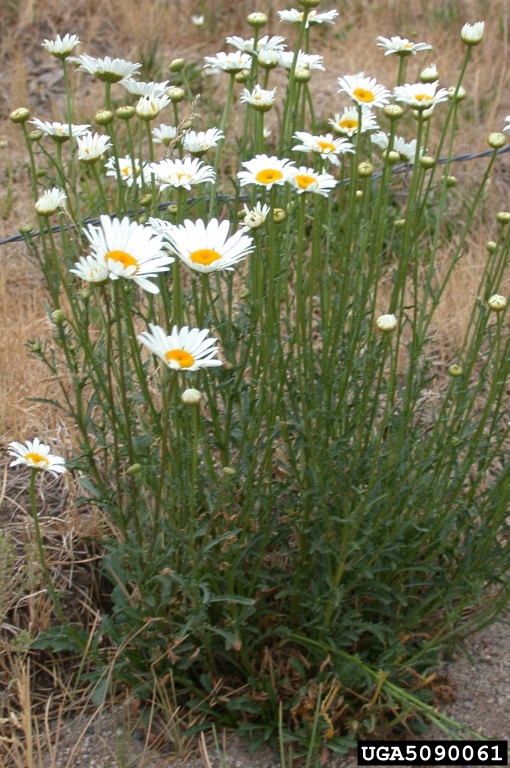Weed Of The Month: Oxeye Daisy
 | Author:
Allison Kosto, MSU Broadwater County Extension Agent
MSU Broadwater County Extension Agent |
Weed of the Month: Oxeye Daisy
Allison Kosto
MSU Broadwater County Extension Agent
While it has been documented in Broadwater County for several years, I haven’t had the pleasure of finding oxeye daisies often in our county until last summer. During the summer of 2024, I had my first encounter with an oxeye daisy in Broadwater County in the Big Belt range. This is a noxious weed that definitely needs to be on everyone’s radar as it has the potential to start spreading throughout more of our county.
Description & Habitat
Like many of our noxious weeds, oxeye daisy is native to Europe. It was introduced to North America both as a garden ornamental and accidentally through hay and grain shipments. It can be found in every US state but is less common in the south. It was first found in Lewis & Clark County in 1890 and is now in more than half of Montana's counties. It’s a fairly new invader to Broadwater County. It is typically found in upland pastures and meadows, but it can also be in other disturbed areas. The greatest impact of the daisy is reducing desirable forage, decreasing plant diversity and lowering the livestock or wildlife carrying capacity.
Oxeye daisy looks like your typical daisy and is often mistaken for ornamental daisies. Flowers have yellow centers with long white petals. The ornamental Shasta daisy grows taller, has a larger flower head (over 2 inches) and more of a “bush-like” appearance. Oxeye daisy is a perennial that spreads by seed and through underground stems called rhizomes. A single plant can produce over 500 seeds. Seeds may be viable as soon as 10 days after the flower blossoms. One study found that 82% of seeds were viable for six years and one percent stayed viable after 39 years.
Management
You can play a role in reducing the spread of seeds. Check the label of wildflower seed mixes to make sure it does not contain any noxious weeds including the Oxeye daisy before you plant. Do not drive or walk in heavily infested areas if possible. Wash vehicles, ATVs and equipment before going home.
Mowing may reduce seed production if mowed before the flower buds appear. It may have to be repeated throughout the growing season and subsequent years. Hand-pulling and digging up roots can be used for small infestations. This also may need to be done for multiple years due to a prolonged seed bank. Burning is not recommended because it increases the site’s vulnerability for invasion. Tilling can destroy the root system but is generally not practical in areas where the daisy is a problem. Sheep and goats will graze the plant and can be effective if managed correctly. There are currently no biological control agents for the Oxeye Daisy.
Use of chemicals can be effective, especially in an integrated pest management system. Commonly used chemicals include Curtail, Escort, Milestone, Transline and Tordon (restricted use). Oxeye daisy is moderately resistant to some 2-4 D herbicides. Always read and follow the entire label when applying herbicide. Common chemical names are used for clarity but does not imply endorsement of a product or brand.
For assistance on weed identification and control, contact the MSU Extension Office in Broadwater County at 406-266-9242 or the Broadwater County Weed District at 406-266-9243.
Article Images
Click on Image Thumbnail(s) to view fullsize image
PhotoCredit: Photo Credit: Mary Ellen (Mel) Harte, Bugwood.org
Image 1 Caption: Oxeye Daisy
Photo Credit: Mary Ellen (Mel) Harte, Bugwood.org
